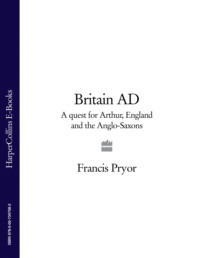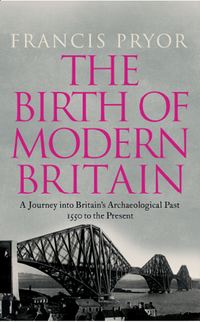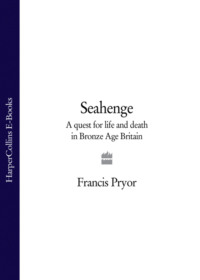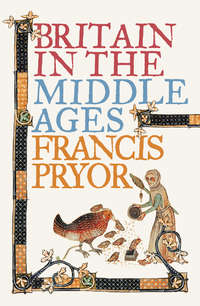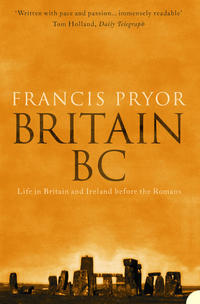
Полная версия
Britain AD: A Quest for Arthur, England and the Anglo-Saxons
When I started writing this book, I intended to organise it much as we had done the three television films, for the simple reason that it seemed to work very well. I also liked the process that gave rise to the structure of the films. In many ways the making of the television series was like an archaeological project, being based on a small and closely integrated team. As the months passed its structure grew in complexity: stories nested within stories in a way that is only possible on film, where one can show one thing on screen, while telling another in commentary and flashback. I decided to arrange the book in a simpler fashion, that was only broadly based on the structure of the films. I start with two chapters on the ancient sources and modern origin myths of Britain, and the legends that surround King Arthur. In subsequent chapters I turn to the archaeological evidence, starting not in the Dark Ages of immediately post-Roman Britain, not even in the preceding Roman period, but in pre-Roman, or prehistoric, times, where the roots of the mythical King undoubtedly lie.7
Dates and Periods
Date Period Name Alternative Names Period 1500 Post-medieval 1066 Medieval (can start c. AD 800) The Middle Ages 800 Late Saxon Early Medieval 650 Middle Saxon 450 Early (or Pagan) Saxon (‘Pagan’ is an older usage) Early Christian (in the south-west) ‘The Dark Ages’ or Migration Period 410 Sub- or Post-Roman 43 AD The Roman Period BC 150 Late Iron Age 450 Middle Iron Age 750 Early Iron Age 1250 Late Bronze Age 1500 Middle Bronze Age 2500 Early Bronze Age 4200 Neolithic or New Stone Age 10,000 Mesolithic or Middle Stone Age 500,000 Palaeolithic or Old Stone Age Archaeological Characteristics Notes 1485 Le Morte d’Arthur printed c. 1136 Geoffrey of Monmouth’s History of the Kings of Britain 1066 Norman Conquest Towns flourish 871-899 King Alfred reigns Appearance of first towns in Britain 731 Bede’s History finished 664 Synod of Whitby 625 King Raedwald of Essex buried at Sutton Hoo 597 St Augustine’s mission to the Anglo-Saxons lands in Thanet c. 475-550 Gildas writes ‘Anglo-Saxon’ pottery at end of 4th century Most of Britain a part of the Roman Empire 409 British reject Roman rule367 great Barbarian Conspiracy60-61 Boudica’s revolt Wheel-made pottery British Celtic Art flourishes 54-55 Caesar’s two expeditions to Britain Period of rapid population rise Appearance of earliest Celtic Art First construction of hillforts Era of metalwork hoards Era of round barrows Appearance of Beaker pottery 1600 Plank-built sea-going boats 2950 Stonehenge started First farming in Britain around 4200 Hunter-gathering and fishing communities, using small flint implements and weapons End of the last Ice Age Hunter-gathering communities, using large flint implements and weapons Ages of IceEarliest people in what was later to become Britain*Gibbon adds a footnote on his sources here, which concludes with the remark that ‘Mr Whittaker…has framed an interesting and even probable, narrative of the wars of Arthur: though it is impossible to allow the reality of the round table.’
By ‘most rational account’ he is probably referring to the Welsh author known as Nennius.
Конец ознакомительного фрагмента.
Текст предоставлен ООО «ЛитРес».
Прочитайте эту книгу целиком, купив полную легальную версию на ЛитРес.
Безопасно оплатить книгу можно банковской картой Visa, MasterCard, Maestro, со счета мобильного телефона, с платежного терминала, в салоне МТС или Связной, через PayPal, WebMoney, Яндекс.Деньги, QIWI Кошелек, бонусными картами или другим удобным Вам способом.


